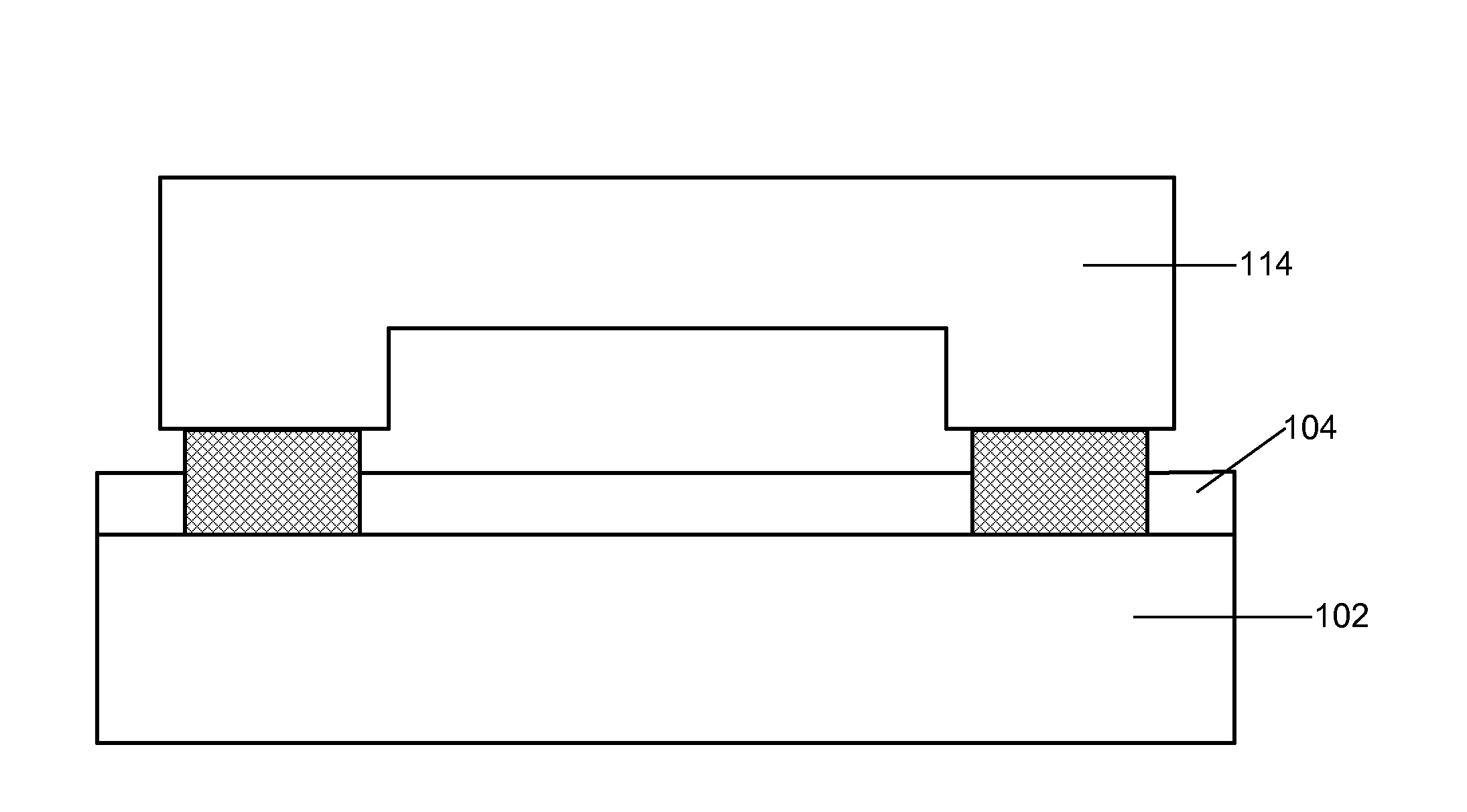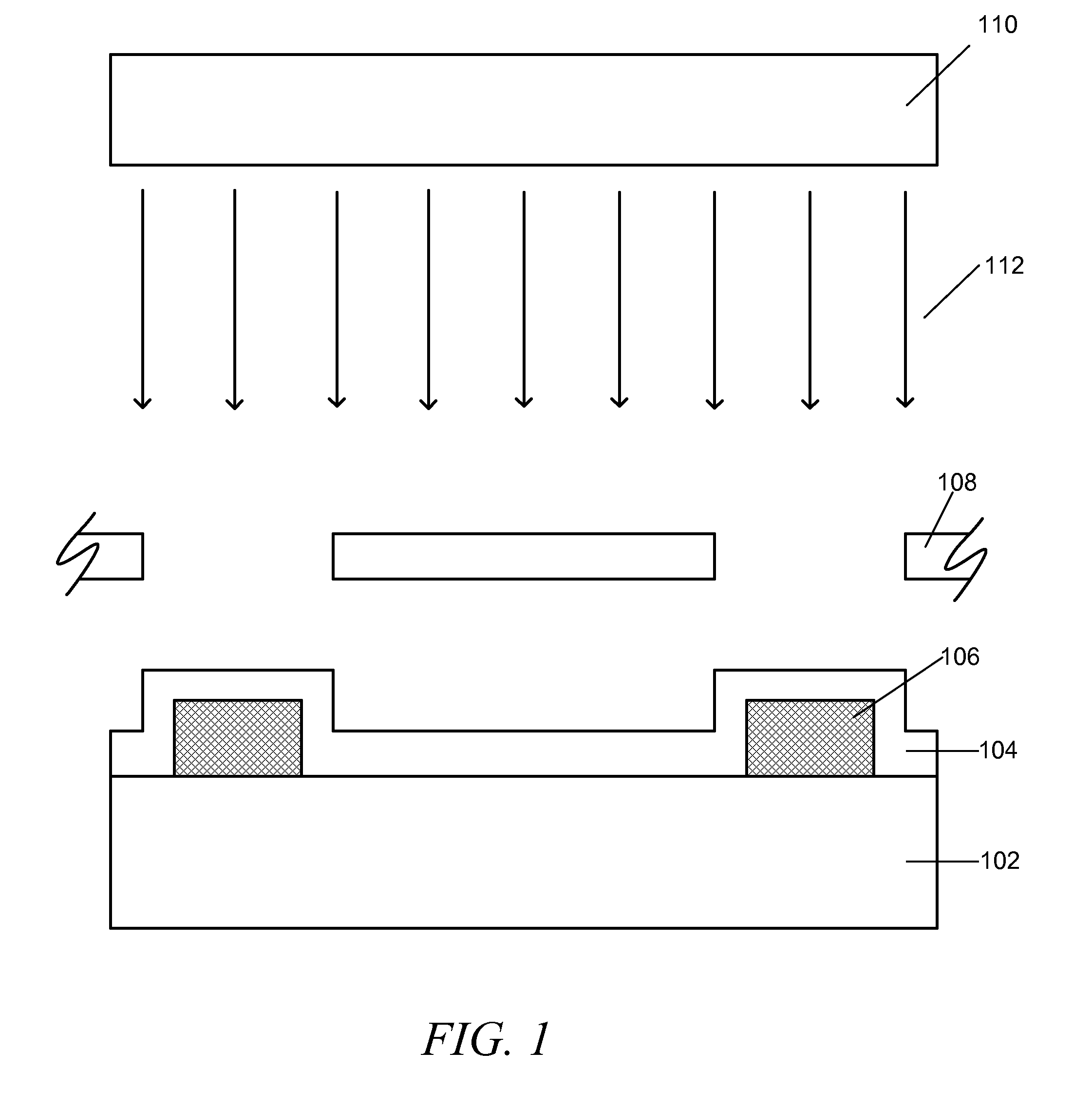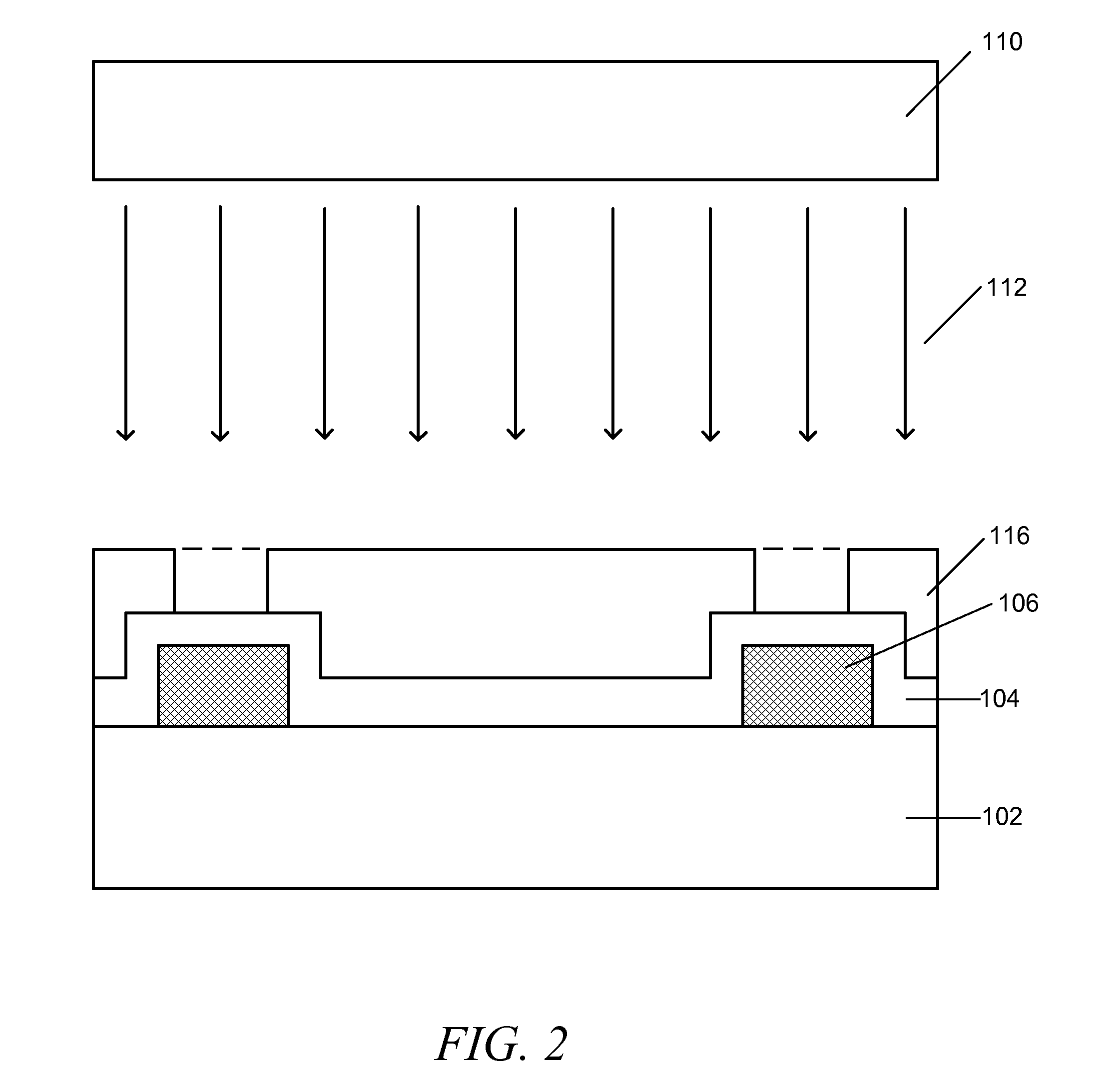Selective UV-Ozone Dry Etching of Anti-Stiction Coatings for MEMS Device Fabrication
- Summary
- Abstract
- Description
- Claims
- Application Information
AI Technical Summary
Benefits of technology
Problems solved by technology
Method used
Image
Examples
Embodiment Construction
[0026]In exemplary embodiments of the present invention, organic anti-stiction coatings such as, for example, hydrocarbon and fluorocarbon based self-assembled organosilanes and siloxanes applied either in solvent or via chemical vapor deposition, are selectively etched using a UV-Ozone (UVO) dry etching technique in which the portions of the organic anti-stiction coating to be etched are exposed simultaneously to multiple wavelengths of ultraviolet light that excite and dissociate organic molecules from the anti-stiction coating and generate atomic oxygen from molecular oxygen and ozone so that the organic molecules react with atomic oxygen to form volatile products that are dissipated, resulting in removal of the exposed portions of the anti-stiction coating. A shadow mask (e.g., of glass or quartz), a protective material layer, or other mechanism may be used to selective expose the portions of the anti-stiction coating to be UVO etched. Such selective UVO etching may be used, for...
PUM
| Property | Measurement | Unit |
|---|---|---|
| Wavelength | aaaaa | aaaaa |
| Wavelength | aaaaa | aaaaa |
| Temperature | aaaaa | aaaaa |
Abstract
Description
Claims
Application Information
 Login to View More
Login to View More - R&D Engineer
- R&D Manager
- IP Professional
- Industry Leading Data Capabilities
- Powerful AI technology
- Patent DNA Extraction
Browse by: Latest US Patents, China's latest patents, Technical Efficacy Thesaurus, Application Domain, Technology Topic, Popular Technical Reports.
© 2024 PatSnap. All rights reserved.Legal|Privacy policy|Modern Slavery Act Transparency Statement|Sitemap|About US| Contact US: help@patsnap.com










